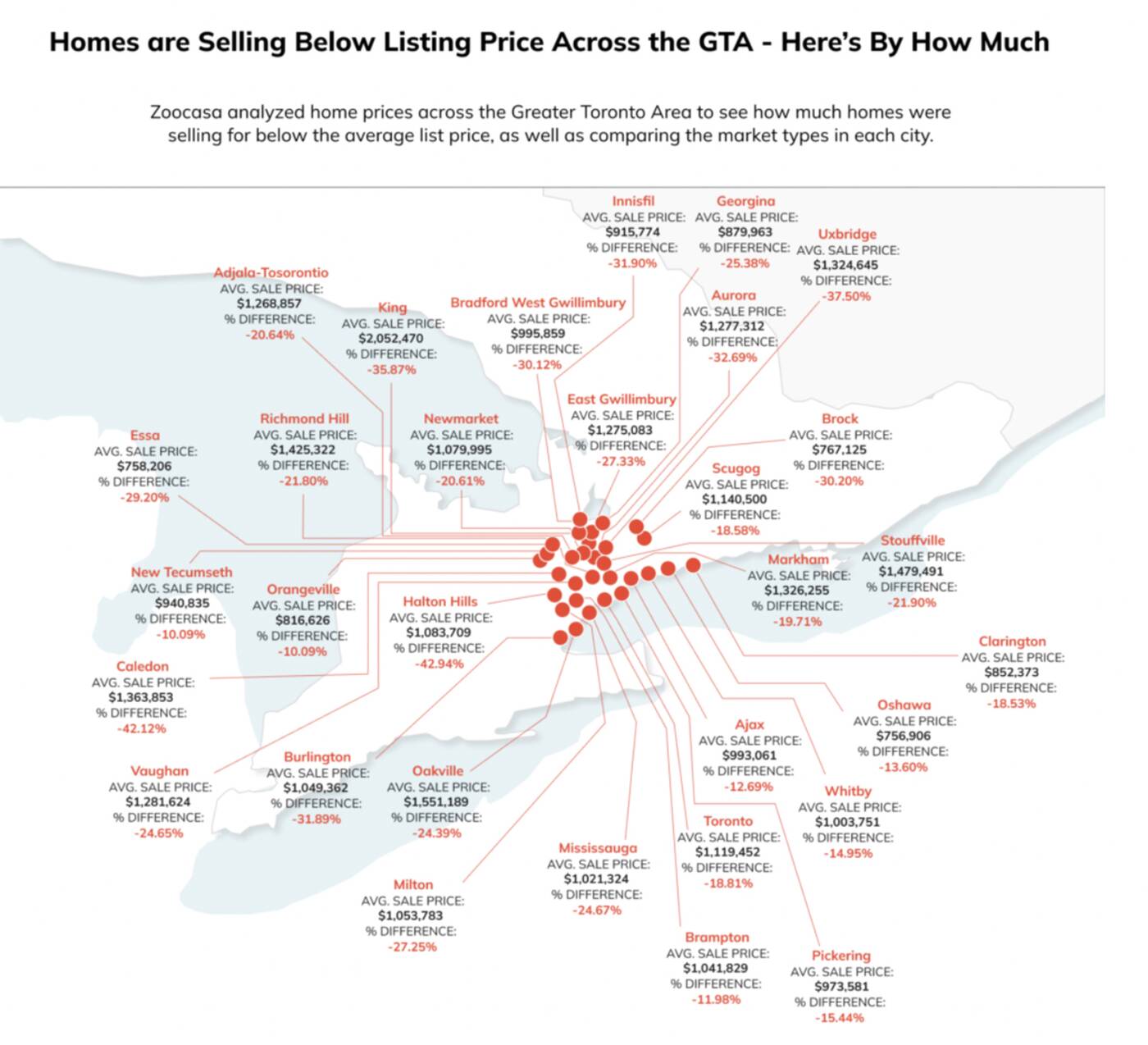
Homes in Ontario are selling for way below asking and here's where prices are lowest
Along with the fact that far fewer homes have been changing hands in recent months, there some other indicators that the GTA's housing market is in a steep downturn, though prices are not exactly letting up to match the decline in activity.
For one thing, homes have been sitting on the market for way longer than they used to back in the days where prospective buyers needed to have a deposit in hand and their bidding war elbows out upon first viewing a place.
Also, when they do sell, homes are going for far less than their listing price, with many owners forced to accept less than they'd hoped for in light of high interest rates and the more sluggish market they've spawned — for some, selling is not an option but a necessity as their mortgage renewal date at a higher rate approaches.
Who can afford to live in Toronto?
— bigaltoronto (@AllanBSportsFan) October 10, 2023
According to a new report from Zoocasa, while real estate in some parts of the province is now selling for an average of 10 per cent less than the prices they are listed at, in others, the trend is far more drastic, with buyers only willing to offer about 58 per cent of the advertised price as of September 2023.
Across the region, the phenomenon appears to be the most extreme in the places where homes are most expensive, such as Caledon and Halton Hills.
The former municipality has the second-highest average listing price in the GTA at $2,365,199, but also the second-greatest difference between that and the average selling price, which is $1,363,853, or a whopping 42.12 per cent less. The later township has the fifth-highest average asking price (of $1,899,393) and the largest gap between that and the average selling price (of $1,083,709, or 42.94 per cent less).
The disparity is also vast in Uxbridge, which had the third-highest average listing price last month ($2,119,398) but also the third-biggest discrepancy between that and the average selling price, which was 37.5 per cent less, or $1,324,645.

Infographic on how far actual sales prices were from listing prices around the GTA in September 2023 from Zoocasa.
Also high on the list was Aurora, the sixth-most pricey community analyzed, where listing prices were an average of 32.69 per cent loftier than actual sale prices last month ($1,897,654 vs. $1,277,312). Then came Burlington, with listing prices 31.89 per cent above selling prices ($1,540,694 vs. $1,049,263).
On the other end of the spectrum, the place that had the least variance between these two figures was Orangeville, the second-most affordable place surveyed out of 31 GTA cities and towns. The typical listing price here was still 10.09 per cent more optimistic ($908,292) than the typical selling price ($816,626).
Also somewhat bucking the trend were Brampton and Ajax, where selling prices were 11.98 per cent and 12.69 per cent, respectively, lower than selling prices: $1,183,632 listing vs. $1,041,829 selling for Brampton, and $1,137,451 listing vs. $993,061 selling for Ajax.
Sure, but it would crater the economy, causing far more pain for far more people. Then, the rich who weren't as affected, would swoop in and buy up most of the distressed sales, putting us in a worse situation than we are now.https://t.co/ArewUnohIJ
— Jeffrey Team - Toronto Real Estate (@condoloft) October 3, 2023
Overall, the top 5 cheapest places to buy a home in the GTA based on the September sales price data are Oshawa ($756,906), Essa ($758,206), Brock ($767,132), Orangeville ($816,626) and Clarington ($852,373).
Based on listing price data, they would be the same locales, but in the order of Oshawa ($876,004), Orangeville ($908,292), Clarington ($1,046,218), Essa ($1,070,961) and Brock ($1,098,962). Would-be homeowners should now keep in mind, though, that they have a fair chance of bargaining these prices down anywhere in the GTA, as per these findings.
Latest Videos
Latest Videos
Join the conversation Load comments







